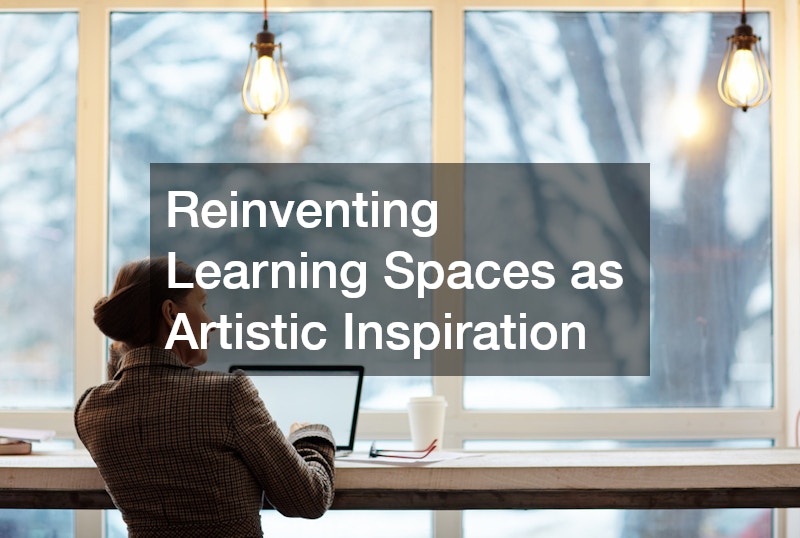
Most people walk into a clinical environment expecting sterile surfaces, blank walls, and fluorescent lighting. These visual cues have become synonymous with healthcare spaces, and while they may communicate cleanliness, they don’t contribute to comfort. In recent years, however, a growing number of practice owners have realized that visual aesthetics can powerfully influence how patients feel the moment they step through the door.
Creative design—spanning everything from strategic color choices to immersive art installations—has transformed the way modern practices approach patient care. Many clinical teams now embrace the idea that emotional comfort is just as important as physical comfort. Art, thoughtful décor, and intentional layout decisions are no longer “extras” but essential components of the overall patient experience.
This article explores practical ways that practices across the healthcare spectrum are incorporating creativity into their spaces. Drawing from methods used in education, commercial design, and artistic collaboration, the discussion highlights the strategies that contribute to warm, welcoming environments that reduce stress and elevate trust.
Understanding the Role of Professional Artists in Clinical Settings

The use of creative professionals—particularly painters—is becoming increasingly common in clinics that want to move beyond basic décor and into curated visual experiences. These artists bring a specialized eye for mood, flow, and emotional impact that can be transformative in a clinical environment.
Why professional artwork matters
Unlike generic prints or stock images, custom artwork allows a practice to create intentional themes that support emotional well-being. For example:
-
Soft landscapes help reduce stress
-
Abstract shapes encourage curiosity and distract from anxiety
-
Color-blocked murals guide movement and create a sense of structure
Even a small investment in purposeful artwork can radically shift the emotional tone of a space.
Actionable guidance on selecting the right artist
When hiring painters for a clinic project, consider the following:
-
Experience working in professional or healthcare environments
Artists who understand patient sensitivity—especially to overstimulation—are better equipped to tailor their work. -
Portfolio versatility
Look for examples of calm, vibrant, minimalist, and thematic projects. -
Ability to work with existing branding
The art should align with the clinic’s visual identity rather than compete with it.
Budgeting for creativity
Clinics often think art must be expensive. In reality, art can be scalable: even small, intentional design choices can dramatically improve atmosphere without stretching the budget. Instead of investing in large installations right away, clinics can start by incorporating smaller framed prints, decorative accents, or subtle wall decals that introduce warmth and personality. Rotating these pieces seasonally or annually can keep the environment feeling fresh without requiring a full redesign. Another cost-effective approach involves sourcing artwork from local artists, students, or community groups who may offer pieces at lower prices or in exchange for display exposure.
Clinics can also make use of digital artwork—high-quality images displayed on screens—which allows for flexible, regularly updated visual themes without purchasing physical pieces. Additionally, simple enhancements such as accent walls, textured paint techniques, or strategically placed greenery can elevate the visual appeal of a space at a low cost. By investing in small updates over time rather than committing to major renovations all at once, clinics maintain financial control while still improving patient-focused aesthetics.
-
Start with a single feature wall
-
Incorporate smaller accent illustrations
-
Use rotating installations created by local artists
Small touches create big impact without overwhelming the budget.
Designing a Welcoming Atmosphere Through Layout and Flow
A thoughtfully designed dental office can significantly reduce patient stress by creating visual order and emotional clarity. Layout is one of the most overlooked components of patient comfort, but it plays a central role in shaping perception and guiding movement.
How layout influences emotions
Chaotic or cluttered spaces increase anxiety. When patients walk into a dental office that feels calm and organized, they subconsciously assume the care will be equally precise and attentive. This is why layout matters not just aesthetically but psychologically.
Actionable layout strategies
-
Use open pathways
Avoid bottlenecks and dead-end corners. -
Utilize natural light
Replace harsh fluorescent bulbs when possible. -
Create visual sightlines
Allow patients to easily navigate without asking for directions.
Enhancing waiting areas
The waiting area sets the emotional tone. To improve comfort, practices can:
-
Use soft materials—wood, fabric, plants
-
Add calming textures like woven baskets or cork
-
Provide visual distractions such as books, art, or nature displays
These choices help create an environment that feels more like a lounge and less like a clinical facility.
Creating Experiences That Reflect Specialized Services

A clinic specializing in aesthetic treatments must ensure its environment supports its brand, particularly when operating as a cosmetic dentist. Design influences perception, and perception influences trust.
Aligning design with clinical identity
An aesthetic-focused practice should visually communicate:
-
Precision
-
Artistic skill
-
Attention to detail
-
High-end professionalism
If the décor does not match the quality of treatment, patients may perceive a disconnect.
Actionable branding-driven design ideas
-
Feature walls
Use understated color gradients or elegant textures to reinforce brand personality. -
Curated artwork
Choose pieces that reflect themes of confidence, beauty, or transformation. -
Lighting
Use soft, flattering lighting that complements both décor and patient comfort.
Maintaining cohesion
A consistent style throughout the practice ensures that patients feel immersed in a unified experience. Everything—from seating to accent colors—should reflect the brand’s personality.
Borrowing Design Principles From Education Environments
Design concepts used in private schools often prioritize focus, calmness, and structured creativity—all beneficial qualities in a clinical space. These educational environments have long studied how color, layout, and visual stimulation affect mood and performance.
Lessons from academic environments
Many private schools incorporate:
-
Calm color palettes
-
Purposeful wall décor
-
Minimal clutter
-
Interactive visual engagement
These principles help create an atmosphere where students can thrive and where anxiety is minimized—lessons that translate well to clinics.
How clinical spaces can adapt these principles
To model these design strategies, clinics can:
-
Avoid overstimulating wall patterns
-
Use thematic décor that encourages curiosity rather than fear
-
Incorporate natural elements like plants or wooden textures
-
Display informative but visually appealing educational graphics
Introducing art collaborations
Educational environments often highlight student-created artwork. Clinics can replicate this idea by collaborating with local youth programs, creating meaningful community ties and visually refreshing installations.
Maximizing Aesthetic Impact With Expert Design Collaboration

Working with interior designers can help clinics elevate their design from functional to emotionally compelling. These professionals consider every detail—from lighting angles to material texture—to ensure a cohesive and calming atmosphere.
Why expert collaboration matters
Interior designers bring technical skills such as:
-
Space planning
-
Lighting design
-
Color psychology
-
Material selection
-
Branding integration
Their knowledge ensures the final environment is both visually appealing and functional for staff workflow.
Tips for selecting the right designer
-
Ask for healthcare-specific experience
Designers familiar with clinical requirements understand the balance between aesthetics and sanitation. -
Review full portfolios
Look for examples of calming, professional environments with strong visual cohesion. -
Discuss budget and expectations early
Transparency prevents unexpected costs.
Practical enhancements designers can guide
-
Furniture layout
-
Lighting direction
-
Wall treatments
-
Traffic flow patterns
These subtle decisions contribute to emotional comfort and operational efficiency.
Inspiring Creativity Through Cross-Industry Partnerships
Clinics that partner with artistic programs, such as a cosmetology school, often gain access to fresh creative perspectives. Students in these programs are trained in aesthetics, color, and artistic expression—skills that translate well into visual décor. Their understanding of balance, harmony, and visual flow gives them an advantage when brainstorming design concepts that feel modern, uplifting, and emotionally supportive for patients. Many students are also attuned to current trends, making them valuable contributors when clinics want to update styles or try bold accents. Because they learn hands-on techniques related to styling and composition, they naturally bring an eye for detail that can elevate even small décor changes.
Students eager to build portfolios create a mutually beneficial arrangement. Clinics on tight renovation budgets benefit from student-driven projects that are cost-effective yet high quality. Student teams can create custom wall pieces, rearrange layouts for better cohesion, or suggest seasonal décor rotations. Their enthusiasm often inspires fresh energy, helping staff see their workspace in new ways.
Such collaborations deepen community engagement. When local students help decorate, the clinic becomes a community hub celebrating local talent. This fosters goodwill among patients who appreciate seeing local work. Families of participating students may also feel more connected, increasing loyalty. Clinics can host showcase events to highlight student artwork, providing exposure for learners and reinforcing the clinic’s innovative, community-minded image.
How cross-industry collaboration benefits clinics
-
Access to innovative design ideas
-
Opportunities for rotating exhibits
-
Promotion of young artistic talent
-
Low-cost or volunteer-based installations
Practical ways to collaborate
-
Invite students to submit artwork
-
Host small community art events
-
Offer a feature wall for temporary displays
-
Provide real-world design experience for participants
These collaborations help clinics stay visually current while contributing to the community.
Reinventing Learning Spaces as Artistic Inspiration

Educational spaces often incorporate intuitive visual cues that guide behavior. These cues—used in any type of school—support calmness, structure, and emotional regulation.
What clinics can learn from educational spaces
-
Visual simplicity helps reduce cognitive load
-
Clearly defined zones provide emotional clarity
-
Warm, soft tones feel less intimidating than stark whites
These concepts are ideal for designing healthcare environments.
Actionable strategies from academic layouts
-
Zoned areas
Create distinct zones for waiting, consultation, and treatment. -
Color-coded guidance
Use soft color transitions to direct movement. -
Natural materials
Incorporate materials like wood and plants for warmth.
Incorporating interactive elements
Just as educational spaces use interactive displays, clinics can incorporate:
-
Art puzzles
-
Rotating exhibits
-
Nature-inspired exploration stations
These elements work especially well in family-focused practices.
Bringing Child-Friendly Design Elements to Family Spaces
Design principles used in a montessori school can transform a family-oriented clinic into a calming, child-friendly environment. Montessori approaches emphasize independence, sensory calmness, and natural design elements.
Montessori-inspired concepts for clinics
-
Low-sensory décor
-
Orderly layouts
-
Natural materials
-
Purposeful textures
These elements create emotional balance for children and reduce fear.
Actionable ideas for child-focused areas
-
Use pastel color palettes
-
Incorporate wooden toy stations
-
Display nature-themed artwork
-
Add child-accessible shelves or exploration tables
Enhancing treatment rooms for children
Treatment rooms don’t need to feel clinical. Soft colors, minimal equipment visibility, and soothing art help create a gentle and reassuring environment.
Scaling Art Integration Across Multiple Locations
Larger organizations must replicate successful design strategies across multiple dental offices to maintain brand consistency. This process requires thoughtful planning and standardized creative guidelines.
Maintaining cohesive visual identity
To ensure consistency across locations:
-
Use a unified color palette
-
Reproduce the same mural style across branches
-
Maintain consistent furniture and décor themes
Practical ways to scale creativity
-
Develop design templates
-
Create a shared digital library of artwork
-
Craft a style guide for future renovations
Leveraging patient feedback
Patient input provides valuable insight. Clinics should:
-
Conduct surveys
-
Compare feedback from different branches
-
Adjust visual elements accordingly
This ensures that the environment remains patient-centered regardless of location.
Using Artistic Signage to Improve Navigation and Branding
Signage plays a critical role in helping patients feel oriented and confident. With the help of sign services, modern clinics now design signage that is both functional and visually appealing. Thoughtfully crafted signs not only guide patients seamlessly through the space but also reinforce the clinic’s brand identity, creating a cohesive and welcoming atmosphere from the moment patients arrive. Well-designed signage reduces confusion and stress, enhancing the overall patient experience.
Why signage matters
Artistic signage improves:
-
Wayfinding
-
First impressions
-
Brand recognition
-
Emotional comfort
It also reduces confusion, which minimizes stress.
Actionable tips for artistic signage
-
Choose durable materials such as acrylic or metal
-
Incorporate gentle colors and simple shapes
-
Use clear, legible font styles
-
Create thematic cohesion with other décor elements
Enhancing accessibility
Artistic signage can also improve accessibility by featuring:
-
Icons
-
Braille
-
High-contrast elements
-
Strategically placed directional markers
These design choices make the space more welcoming to everyone.
Clinical environments influence patient emotions in powerful ways. By thoughtfully integrating artistic concepts, visual cues, and strategic design elements, practices can create environments that support both comfort and confidence. From professional artwork to layout optimization to cross-industry partnerships, each design choice contributes to a more positive, relaxing patient experience. The shift toward art-driven spaces reflects a deeper understanding of the emotional aspects of healthcare and demonstrates a commitment to holistic patient care.





